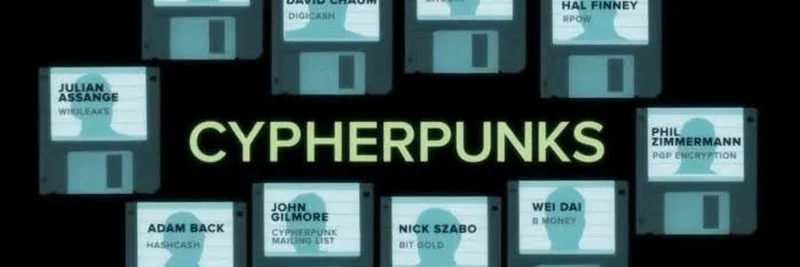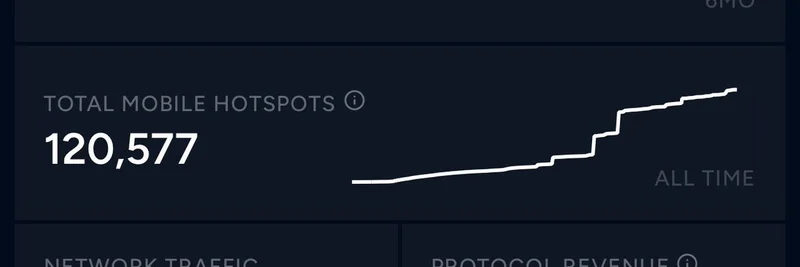In the fast-paced world of cryptocurrency, where meme tokens like Dogecoin and newer ones dominate headlines, it's easy to forget the roots that made all this possible. But a recent tweet from hitesh.eth (@hmalviya9) on October 9, 2025, serves as a timely reminder: "You need to study the Cypherpunks movement. If you really care about privacy, now is a great time to know who our real heroes were." He's quoting his own deep-dive thread from 2023, emphasizing how the entire crypto industry stands on the shoulders of these privacy pioneers who fought for freedom through code.
This isn't just nostalgia—understanding cypherpunks helps blockchain practitioners, including those in the meme token space, grasp why privacy tools like zero-knowledge proofs matter today. Let's break it down conversationally, explaining key terms along the way, based on that insightful thread.
A Quick Intro to Cypherpunks
Back in the 1990s, as the internet was booming, cryptographers—experts in coding secure communications—saw trouble ahead. Governments and corporations were gearing up to snoop on personal data, threatening online privacy. To counter this, three key figures—Eric Hughes, Timothy C. May, and John Gilmore—gathered about 30 like-minded libertarians (people who value individual freedom above all) in 1992. Their goal? Use cryptography to protect privacy.
The first meeting happened on September 25, 1991, at Whisman Station Plaza. Tim May kicked things off by reading his "Crypto Anarchist Manifesto" from 1988, which argued that cryptography could enable anonymous transactions and undermine overreaching authorities. This resonated deeply, sparking what became the cypherpunks movement—a blend of "cipher" (code) and "punk" (rebellious spirit).
The Mailing List: Where Ideas Took Flight
Within a week of that meeting, Hughes set up a mailing list—think of it as an early encrypted email forum. Hal Finney, another cryptography whiz, added Pretty Good Privacy (PGP) version 2.0 to anonymize senders. This list grew fast, attracting over 2,000 members by year's end, including academics and coders worldwide.
Why does this matter? It's where Satoshi Nakamoto (Bitcoin's mysterious creator) later shared ideas and drew inspiration. Without this collaborative space, Bitcoin's peer-to-peer network—allowing direct transactions without banks—might not have emerged. For meme token enthusiasts, this echoes how decentralized communities on platforms like Telegram or Discord drive token launches today.
The Cypherpunks Manifesto: Privacy Above All
The group's core belief was simple: Privacy isn't optional; it's a right you control, not something governments or companies dictate. Their manifesto, penned by Hughes, declared, "Cypherpunks write code." They believed in building tools to enforce privacy rather than begging for it.
This DIY ethos is alive in crypto today—think of privacy-focused meme tokens or protocols that let you trade anonymously. Cypherpunks weren't just talking; they coded solutions to real-world surveillance threats.
The Crypto Wars: Battling for Encryption Rights
In 1993, things heated up when Phil Zimmermann's PGP software democratized strong encryption, letting anyone secure emails. The Clinton administration saw this as a threat and investigated Zimmermann for "exporting munitions" (treating code as a weapon).
Dubbed the "Crypto Wars," this clash pitted cypherpunks against the government. They rallied, arguing encryption was free speech. By 1996, charges were dropped—a huge win. This paved the way for secure tech we take for granted, like encrypted WhatsApp messages or Amazon's payment security. In the meme token world, it's why we have tools to shield transactions from prying eyes.
Hashcash: The Proof-of-Work Precursor
Fast-forward to 1997: Adam Back introduced Hashcash, a system to combat email spam by requiring computational "work" (like solving a puzzle) to send messages. This proof-of-work concept directly inspired Bitcoin's mining process, ensuring fair coin distribution without a central authority.
Hashcash made digital money "sound"—scarce and hard to fake—laying groundwork for cryptocurrencies. Meme tokens often use similar mechanisms on blockchains like Ethereum or Solana, where mining or staking secures the network.
Satoshi's Email: The Birth of Bitcoin
In August 2008, Satoshi emailed Back about a new peer-to-peer electronic cash system. Drawing from cypherpunk ideas, Satoshi solved the double-spending problem (preventing the same digital coin from being used twice) and created a decentralized way to issue coins.
The Bitcoin whitepaper cited Hashcash and impressed the mailing list crew. Before vanishing, Satoshi handed off the project, embodying the cypherpunk spirit of decentralization. Bitcoin wasn't just money; it was a privacy revolution.
Why It Matters for Meme Tokens Today
Bitcoin is the cypherpunks' crowning achievement, but their legacy extends to all crypto, including meme tokens. In a world where governments still push for surveillance (think CBDCs), studying cypherpunks reminds us to prioritize privacy and decentralization. Whether you're farming airdrops or launching a meme coin, these principles ensure your projects resist control and empower users.
For a deeper read, check out hitesh.eth's original Medium article here. And follow @hmalviya9 on X for more crypto insights. If privacy is your jam, dive into this history—it's the foundation of the blockchain world we play in.



